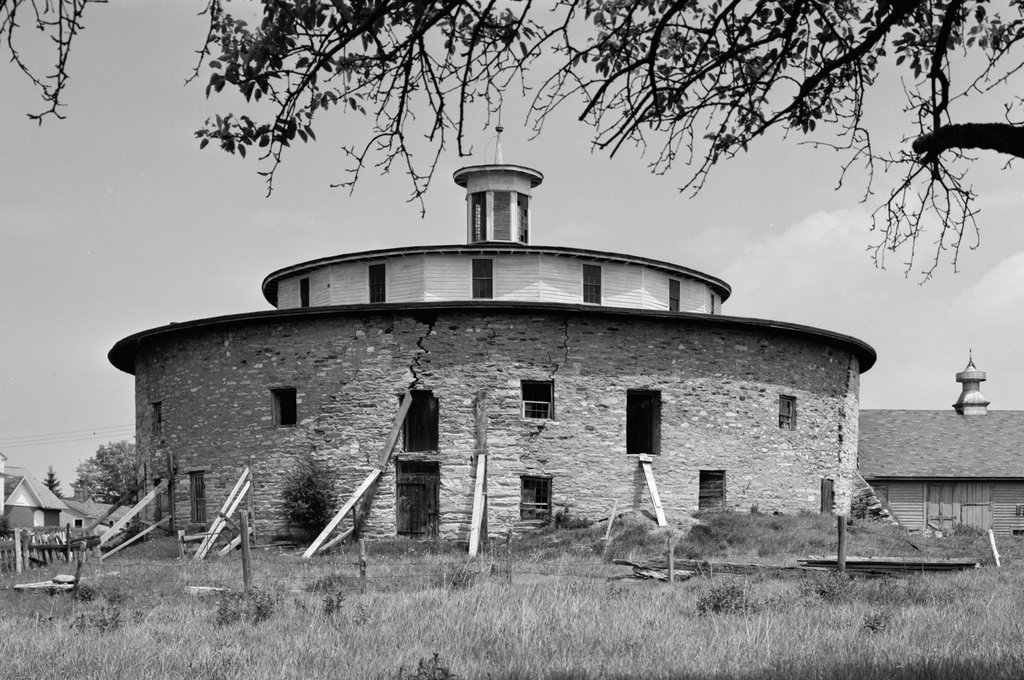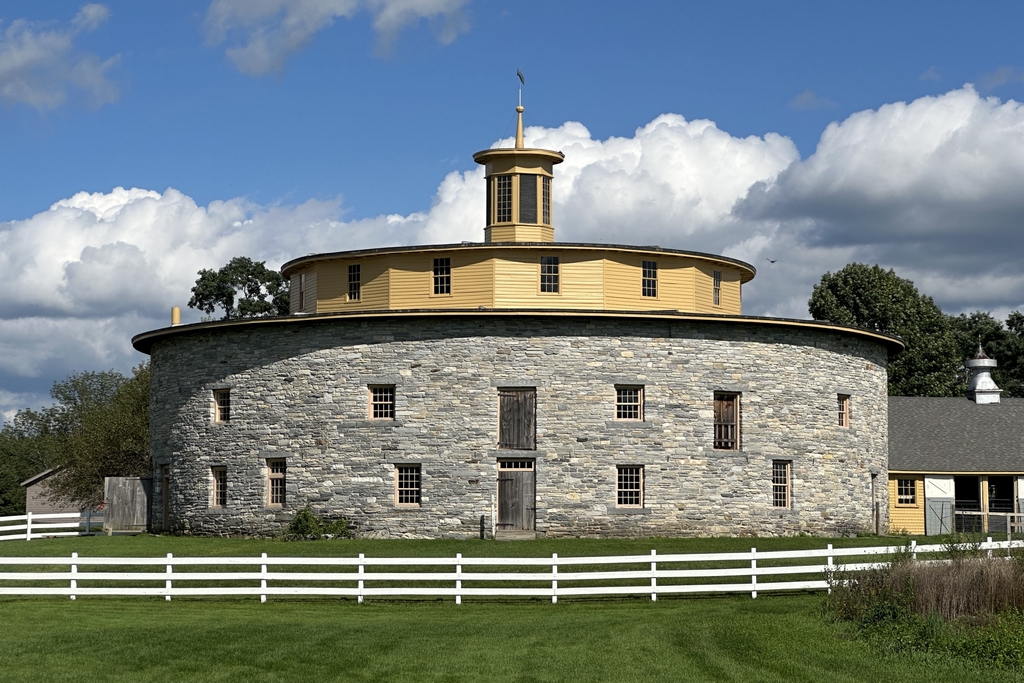The Round Stone Barn at Hancock Shaker Village in Hancock, Massachusetts, in June 1962. Image courtesy of the Library of Congress, Historic American Buildings Survey Collection.
The barn in 2023:
This barn is one of the most distinctive architectural landmarks in Berkshire County, and it forms the centerpiece of the Hancock Shaker Village, an open-air museum on the site of a former Shaker community. The Shakers were originally from England, but they came to America in the second half of the 18th century. They subsequently established a number of communities in the northeast and elsewhere in the United States, including this one, which was established in 1790 in the western Berkshires, on the border of Pittsfield and Hancock.
The Hancock Shaker community steadily grew during the first half of the 19th century, and in 1826 they built this large circular stone barn. It was designed for efficiency, with an interior layout that featured a series of concentric rings on the ground floor. At the center of the barn was a ventilation shaft, and the area around it was for hay storage. The outer ring was where the milk cows were kept, and they were separated from the hay by a circular walkway that allowed the Shakers to easily take hay from the center and feed the cows.
The upper floor was mostly open, except for a circular gallery that was accessible via a ramp on the other side of the building. Hay wagons could enter the barn, deposit hay into the central area of the barn, and then continue around the gallery to exit, without having to back up. The efficient design of the barn even extended to manure disposal. The outer ring of the ground floor had trap doors where manure could be shoveled. It would fall into the basement, where it could be collected with wagons via a ramp that descended into the basement from ground level on the outside of the barn.
The Shakers here in Hancock reached their peak by the mid-19th century, with about 300 members on 3,000 acres of land. However, their numbers steadily dwindled over the next century, before eventually closing in 1960. A year later, the property was preserved as the Hancock Shaker Village museum. By that point, however, the iconic barn was in poor condition, as shown in the first photo. The barn had been largely reconstructed after being heavily damaged by a fire in 1864, but by the 1960s it was again in need of major repairs. There were large cracks in the masonry walls, which had to be supported with wooden bracing.
The barn was ultimately restored in 1968. This project involved removing the masonry exterior walls, repairing the foundation, and then reconstructing the walls using the original stone. Now, more than 50 years after the restoration was completed, the barn is still standing. It looks far better than it did when the first photo was taken, and it remains an important part of the preserved Shaker village.


